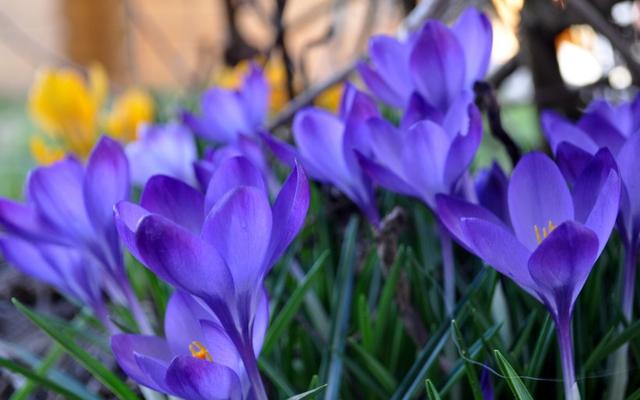Key points and matters needing attention in planting saffron
Nicknames for saffron-saffron, saffron. Origin: originally from southern Europe, Italy and the Mediterranean coast. Today, it is mainly distributed in Spain, France, Sicily, Iran and other regions. Let's give a detailed introduction to it:
1. Soil selection: potted crocuses had better choose soils rich in reproduction, loose and fertile, well drained and breathable.
two。 Cultivation: ① crocuses can be planted either in pots or in water.
The time of ② pot planting is generally from September to October.
③ puts a few broken tiles at the bottom of the basin to serve as a drainage layer.
④ add culture soil to the basin until it reaches half the height of the basin.
⑤ put the saffron bulb in a pot. Generally speaking, 5-7 bulbs can be planted in a mud basin with a diameter of 15-20 cm.
⑥ covered the bulb with a layer of moss and then filled the culture soil.
⑦ is watered thoroughly and placed outdoors. After rooting, it is moved into a cold room. The indoor temperature is slightly higher than that outside.
3. Watering: ① should be watered when the climate is dry.
② has continuous spring rain from March to April, the water is easy to accumulate in the basin, the soil is wet for a long time, and the bulb is easy to rot, which eventually leads to yellow leaves and premature withering of the plant. So remember to drain water in time after rain.
③ should be watered once before entering winter in order to enter the winter safely.
4. Temperature: the best growth temperature of ① saffron is about 15 ℃, and the best temperature of flowering is 14-20 ℃.
② saffron is afraid of heat, so in the south, if the temperature reaches 25 ℃, it is necessary to shade the plant properly, which helps to prolong the growth time of saffron.
③ saffron is also hardy and can endure a low temperature of-18 ℃, but if it is below this temperature, cold protection measures should be taken to avoid freezing damage. Saffron should not be kept in low temperature for a long time, otherwise it will cause poor plant growth, withered leaves and sparse flowers, affecting ornamental.
5. Fertilization: ① saffron needs to be topdressing with thin liquid fertilizer every 15 days during its peak growth period.
② should also apply some available phosphate fertilizer during the bud period, which is beneficial to flowering.
6. Lighting: ① summer and autumn, strong sunshine, it is best to cover 60% of the sun for the plant, otherwise it will burn the leaves, causing the leaves to dry and scorch yellow.
② winter two seasons, the light is soft, at this time the plant can be placed in a place with plenty of light.
7. Reproduction: saffron is commonly used to divide the ball method and sowing method for reproduction, but mainly by the ball method, because the seed propagation time is too long, generally need to cultivate 3-4 years before flowering.
8. Pruning: in order to maintain the graceful shape of the plant, cut off dead, diseased and residual branches at any time.
9. Pest control: the most common diseases of ① saffron during cultivation are Sclerotinia sclerotiorum, rot and rot. Sclerotinia sclerotiorum can be sprayed with 1000 times of 50% tobujin wettable powder or 75% chlorothalonil wettable powder can be sprayed with 1000 times of 50% chlorothalonil.
The common pest of ② saffron is Robin root mite, which can be sprayed with triclofenac.





- Prev

Planting method of potted strawberry corn
Strawberry corn is a kind of mini corn, which belongs to the variant variety of common corn and has high ornamental and edible value. I thought it was purplish red in color and in shape.
- Next

Planting method and Propagation of Flowers-Lily
Lily, has always been known as "cloud clothes fairy", white flowers, beautiful posture, raise a pot of beautiful lilies, must be very proud. So, this way.
Related
- Fuxing push coffee new agricultural production and marketing class: lack of small-scale processing plants
- Jujube rice field leisure farm deep ploughing Yilan for five years to create a space for organic food and play
- Nongyu Farm-A trial of organic papaya for brave women with advanced technology
- Four points for attention in the prevention and control of diseases and insect pests of edible fungi
- How to add nutrient solution to Edible Fungi
- Is there any good way to control edible fungus mites?
- Open Inoculation Technology of Edible Fungi
- Is there any clever way to use fertilizer for edible fungus in winter?
- What agents are used to kill the pathogens of edible fungi in the mushroom shed?
- Rapid drying of Edible Fungi

